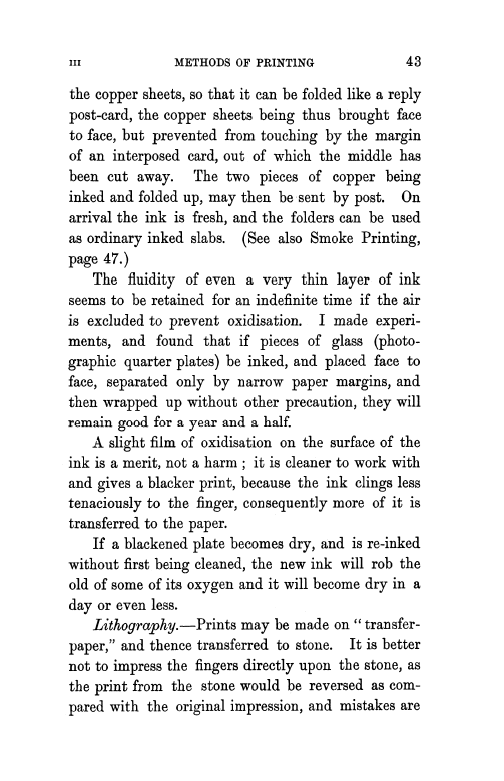| ||||||

OCR Rendition - approximate
III METHODS OF PRINTING 43 the copper sheets, so that it can be folded like a reply post-card, the copper sheets being thus brought face to face, but prevented from touching by the margin of an interposed card, out of which the middle has been cut away. The two pieces of copper being inked and folded up, may then be sent by post. On arrival the ink is fresh, and the folders can be used as ordinary inked slabs. (See also Smoke Printing, page 47.) The fluidity of even a very thin layer of ink seems to be retained for an indefinite time if the air is excluded to prevent oxidisation. I made experiments, and found that if pieces of glass (photographic quarter plates) be inked, and placed face to face, separated only by narrow paper margins, and then wrapped up without other precaution, they will remain good for a year and a half. A slight film of oxidisation on the surface of the ink is a merit, not a harm ; it is cleaner to work with and gives a blacker print, because the ink clings less tenaciously to the finger, consequently more of it is transferred to the paper. If a blackened plate becomes dry, and is re-inked without first being cleaned, the new ink will rob the old of some of its oxygen and it will become dry in a day or even less. Lithography. Prints may be made on " transferpaper," and thence transferred to stone. It is better not to impress the fingers directly upon the stone, as the print from the stone would be reversed as compared with the original impression, and mistakes are
|